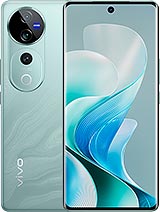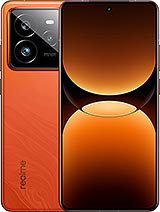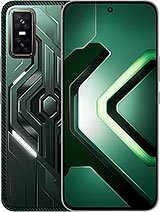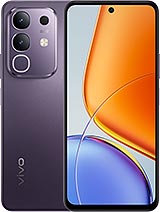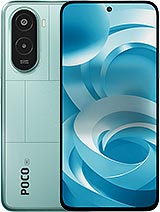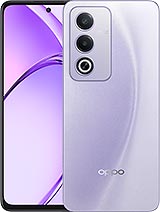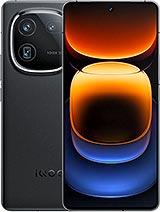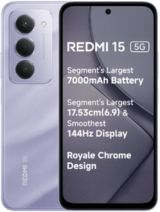iQOO 12 alternatives
Tap above to see alternatives.
Redmi 15 alternatives
Tap above to see alternatives.
1x3.3 GHz Cortex-X4
3x3.2 GHz Cortex-A720
2x3.0 GHz Cortex-A720
2x2.3 GHz Cortex-A520
2x2.3 GHz Cortex-A78
6x2.0 GHz Cortex-A55
12GB 512GB (UFS 4.0)
16GB 512GB (UFS 4.0)
16GB 1024GB (UFS 4.0)
8GB 128GB (UFS 2.2)
8GB 256GB (UFS 2.2)
f/1.7, 23mm (wide), 1/1.3", 1.2µm, multi-directional PDAF, OIS
64 MP,
f/2.6, 70mm (periscope telephoto), 1/2.0", PDAF, OIS, 3x optical zoom
50 MP
f/2.0, 15mm, 119˚ (ultrawide), AF
f/1.75, (wide), 1/2.88" 0.61μm, PDAF
Auxiliary lens
4K@24/30/60fps
1080p@30/60/120/240fps
f/2.5, (wide)
f/2.2, (wide)
SIM1: Nano, SIM2: Nano
11 5G bands
n1, n3, n5, n7, n8, n28, n38, n40, n41, n77, n78
7 5G bands
n1, n3, n5, n8, n28, n40, n78
In this performance comparison, the iQOO 12 with its Qualcomm Snapdragon 8 Gen 3 (4nm) performs better than the Redmi 15 with the Qualcomm Snapdragon 6s Gen 3 (6nm), thanks to superior chipset efficiency.
iQOO 12 offers 3 years of OS updates, whereas Redmi 15 provides 2 years. Both phones receive the same 4 years of security updates.
iQOO 12 features a superior AMOLED display, while Redmi 15 comes with an LCD panel. Both smartphones offer the same 144 Hz refresh rate. iQOO 12 also boasts a brighter screen with 3000 nits of peak brightness, enhancing outdoor visibility. Notably, iQOO 12 offers a higher screen resolution, resulting in sharper visuals and more detailed content.
Redmi 15 features a larger 7000 mAh battery, potentially delivering better battery life. iQOO 12 also supports faster wired charging at 120W, compared to 33W on Redmi 15. Redmi 15 supports wireless charging at -2W, while iQOO 12 lacks this feature.
Both phones feature the same IP64 rating for water and dust resistance.
- iQOO 12 – Check price here
- Redmi 15 – Check price here
¹ Scores can vary even with the same chipset due to RAM, thermals, and software optimization.

